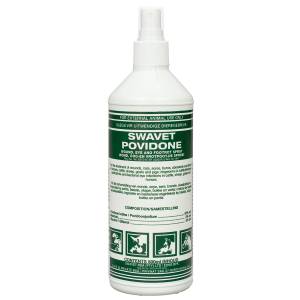Ask any farmer and they’ll tell you that the docking of lamb and sheep tails is something that can easily cause discomfort or make you squirm at the thought… Whether you go for the surgical or non-surgical approach, it’s essential to have the right tools and knowledge, and with SWAVET, tail docking is made easy.
Luckily, our friends at Stockfarm have got you covered with a fantastic article by Carin Venter in their December 2020 issue. We’re here to highlight how SWAVET Medicinal and Instrumental Products can make this task a breeze.
Why Do Some Farmers Dock Tails?
Let’s dive into the reasons behind tail docking according to the Stockfarm article:
- For the prevention of fat accumulation in certain sheep breeds’ tails
- For avoiding blowfly strikes in woolly breeds where faeces and urine soil the tails
- And to prevent the perception that ewes with long tails may not be mated successfully
At the end of the day, it’s all about keeping our furry friends happy and healthy.
Tools of the Trade: SWAVET Has You Covered!
When it comes to docking tails, different methods can be used, but with SWAVET tail docking is made easy. Let us introduce you to our star players: the Gas Sheep Detailer, SWAVET Povidone, and SWAVET Castrator Rings. We’ll tell you more about how these products can simplify the tail docking process and ensure the well-being of your flock. Say goodbye to stress and hello to efficiency! But remember to complete the procedure as methodically as possible without rushing.
Step 01 – Meet the Gas Sheep Detailer: Your Trusty Sidekick

Imagine a wind-resistant tool that’s built to last. That’s our Gas Sheep Detailer, imported all the way from Australia.
This procedure is completed by holding the lamb by all four legs and using the Gas Sheep Detailer to cut off the tail. Our Gas Sheep Detailer is completely wind resistant, and with spare parts available it can easily be used for a lifetime. This method is as robust as it gets, ensuring low infection risks and smooth operations, although the wound is painful and takes longer to heal. Let’s make tail docking a breeze!
Step 02 – SWAVET Povidone: The Versatile Superhero

Before starting with the SWAVET Castrator Rings, hold the lamb by all four legs and spray the tail with SWAVET Povidone.
When it comes to wound care and hygiene, SWAVET Povidone is the go-to product and can be used for the treatment of wounds, cuts, sores, burns, abrasions and foot rot in horses, cattle, sheep, goats and pigs. This all-rounder product can further be used against ringworms in cattle, infectious ophthalmia and bacterial eye infections in cattle, sheep, goats and horses. One product, many solutions.
Step 03 – Let’s Talk SWAVET Castrator Rings: The Magic Circles

It’s time to get acquainted with our SWAVET Castrator Rings. Made of pure latex without any fillings, these rings are imported from Australia and can be used for positive, germ-free marking.
Continue to apply the SWAVET Castrator Rings using the Plastic Castrator Ring Applicator or the Metal Castrator Ring Applicator and pull the skin towards the rump before releasing the ring. They are made of pure latex, with no fillings. We won’t lie—there might be some temporary discomfort. This procedure causes acute pain for a few hours, resulting in lambs laying down. Other behavioural changes may also occur, but the results are worth it.
The Great Debate: To Dock or Not to Dock?
Some specialists argue against docking, due to the lack of concrete research. At SWAVET, we believe in empowering our farmers to make informed decisions. We understand that what works for one farmer might not work for another. Ultimately, it’s about finding the right balance. Docking is not mandatory, but when performed it should be done as professionally as possible.
SWAVET Animal Health is here to support you with professional-grade products, whether you choose to dock, or not. Trust SWAVET for top-quality tools and products that meet the highest standards and make tail docking easy. Let’s keep those tails, whether they’re docked or not, wagging happily!


